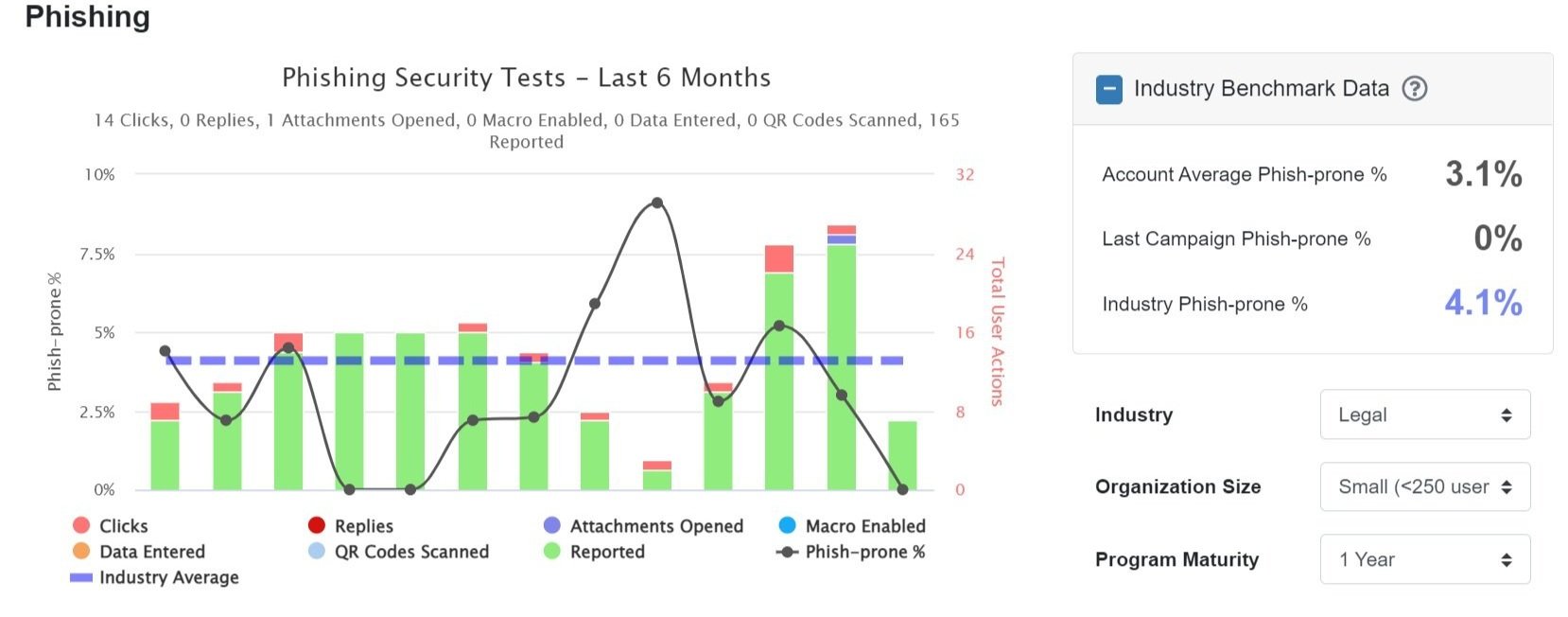
Security Awareness Program
Security Awareness Program & Phishing Tests
Element's Security Awareness Program provides organizations with a comprehensive approach that integrates baseline testing using mock attacks, engaging interactive web-based training, and continuous assessment through simulated phishing attacks to build a more resilient and secure organization.
The most important component of maintaining a strong layer of security for any organization is user awareness. A three-phase approach to security education is the core of the Security Awareness Program. The initial step is to analyze the behavior of users at the onset of the program to identify how they react before any training is provided. A phishing test is sent to all users of the organization to assess the “Phish-prone” percentage of users, to determine a point in time baseline for starting the program. Upon completion of a review of the baseline information, a training plan is developed and implemented through a series of onsite education via presentations, interactive modules and newsletters. Finally, regular quarterly phishing tests are sent out to the users to ensure a high level of security awareness is present within the organization.
Security Awareness Program Explained
Without living and maintaining a way of life that thrives on cybersecurity awareness, employees, owners and managers can easily fall prey to the antics of scammers and unethical hackers. So, how do you promote a culture of cybersecurity awareness? You can start by creating a Security Awareness Program for your team before a cyberattack ever happens. If you own or manage a business, the idea of setting up a program to improve awareness of cybersecurity may sound daunting. Below, we break down the components and goals of this kind of program, and what you can do to revolutionize the way your company protects itself from basic cyberattacks.
Creating a Security Awareness Program
To create an effective security awareness program, we must understand the program’s goals, the factors for efficiency, the elements involved, and the ideal training schedule.
The Goal of a Security Awareness Program
The goal of any security awareness program should be this: equipping every individual in the company with the necessary theory and practical skills for identifying cybersecurity threats and vulnerabilities so that incidents can be easily foreknown and tackled. There are many different elements which come together to make this goal a reality and though these elements depend on countless factors for efficiency, the most important aspect of a security awareness program will always be the people involved in it.
The Factors for Security Awareness Program Efficiency
The factors which dictate the efficiency of a security awareness program are:
People: Those involved in the security of the business or company; this includes all the members of the IT/cybersecurity team and everyone else in the company. Cybersecurity cannot be left in the hands of a few.
Controls: The tools available for cyber threats identification and vulnerabilities spotting.
Detection: The identification of cyberattacks.
Controls and Detection depend on the people in the company for active functionality of an awareness program. Once these three factors are put in place, communicated excellently, and acted upon in the same guise, the culture of security awareness can sit right in place.
Elements of a Security Awareness Program
Your Security Awareness Program should contain the following:
Documents: Security handbooks, communication channels, a FAQ list and any other necessary documentation should be handed out within the first security awareness training session. This documentation should be regularly updated for relevancy, and all changes should be communicated at each training session.
Controls: The tools for preventing and identifying cyberattacks should be available, explained, and simulated in a close-to-real-life-environment in a security awareness program. Controls should also include a plan of action for if a cyberattack or data breach occurs.
The Right Time for Teaching Security Awareness
As cybersecurity is a fluid subject and an ever-present threat, cybersecurity awareness should be regularly discussed and reinforced. Therefore, training should happen on a regular and timely basis, as well as a few other special occasions:
When a new employee is onboarded; this sets the tone for everything related to cybersecurity at the organization.
After a cybersecurity breach has happened; this is a good time to reset the tone for everything related to cybersecurity at the organization.
With consistent and reactive awareness training, your employees will be well equipped to prevent and react to any cyberattack that presents itself.

